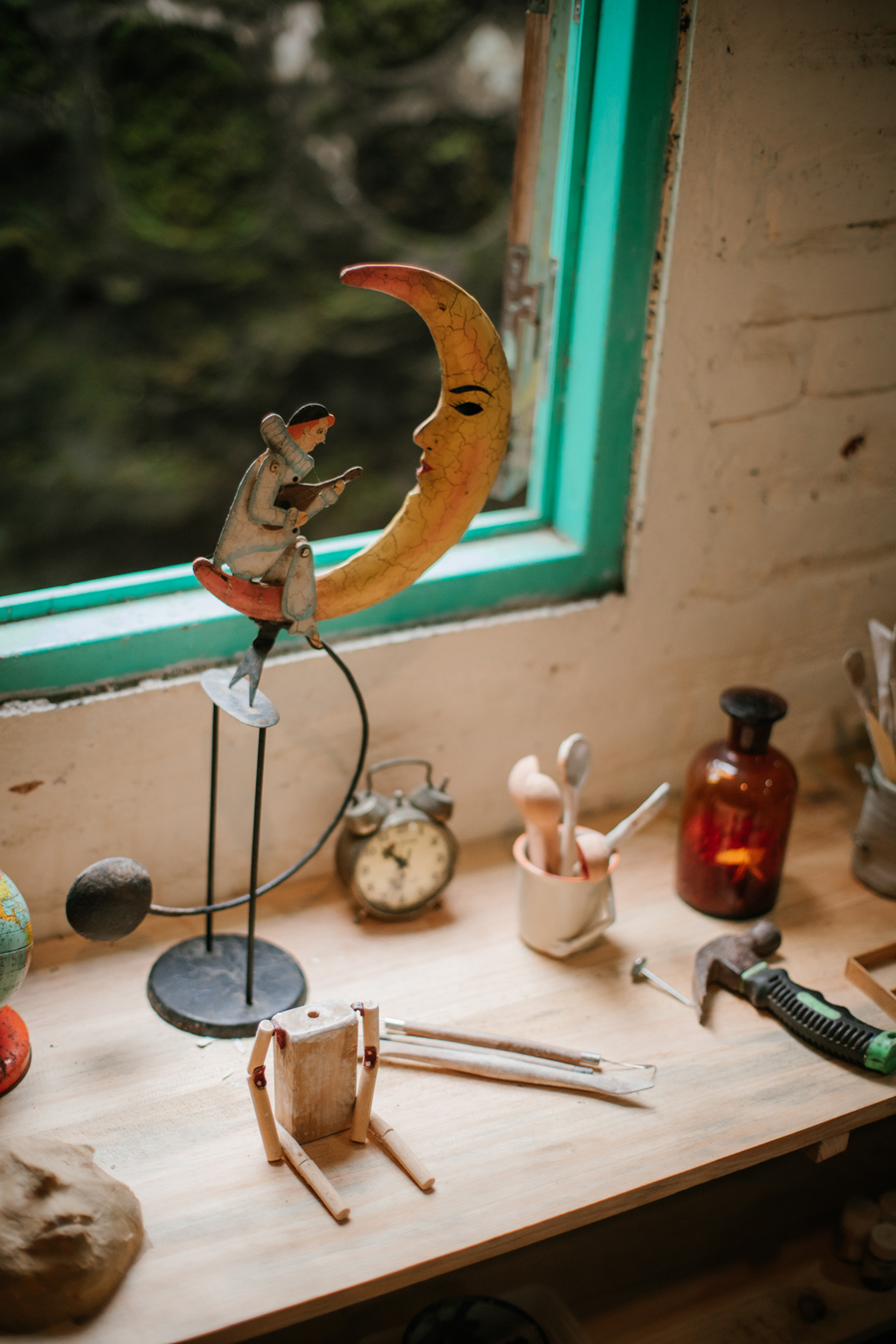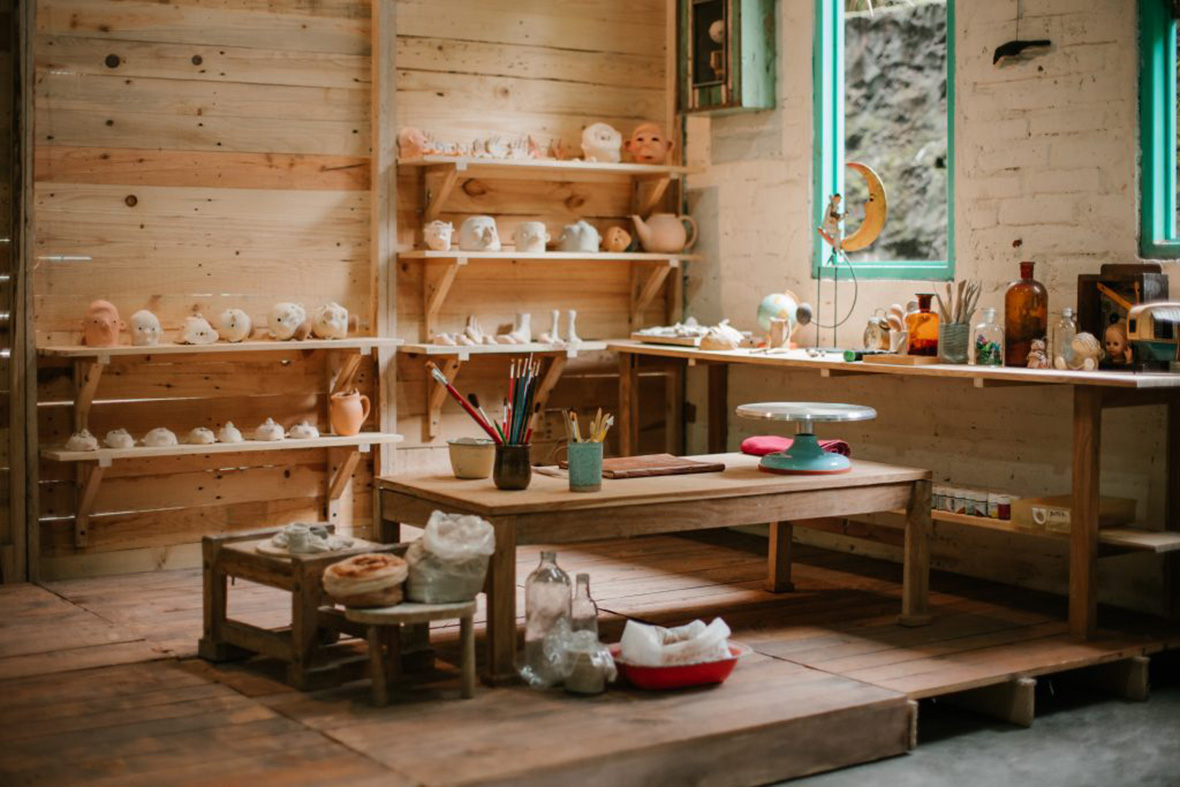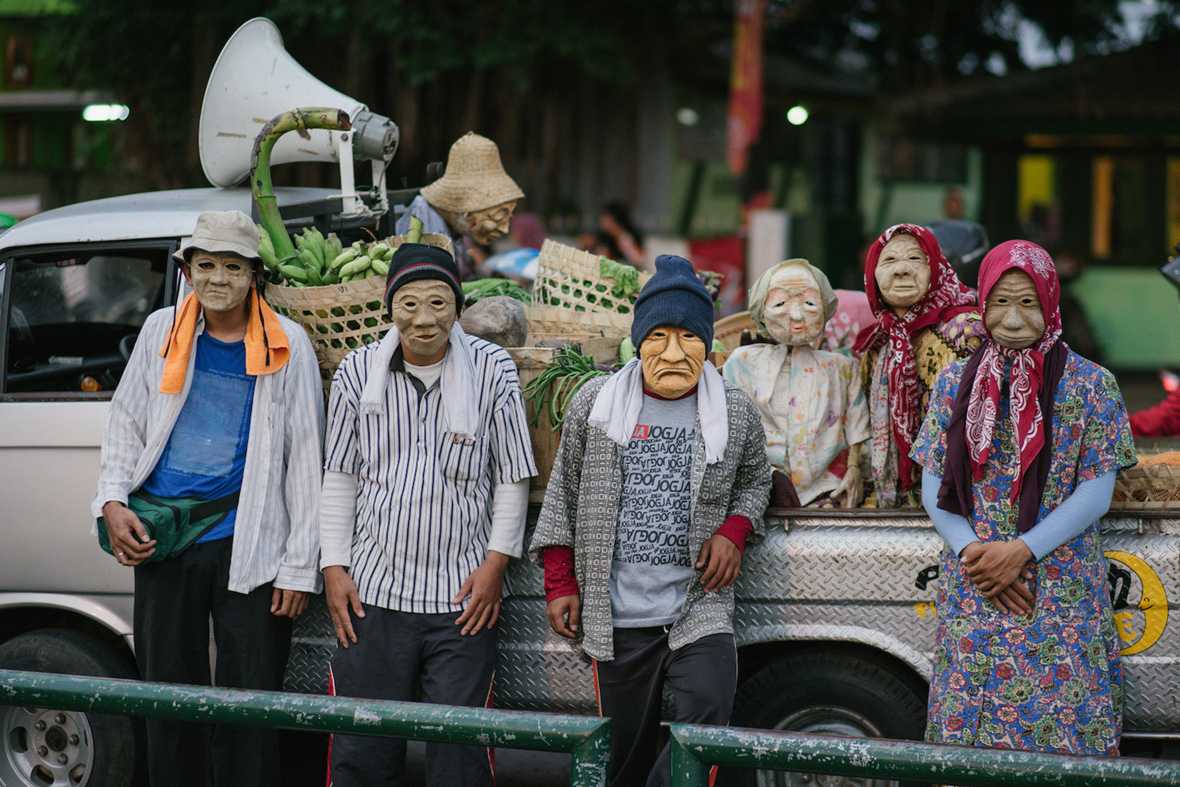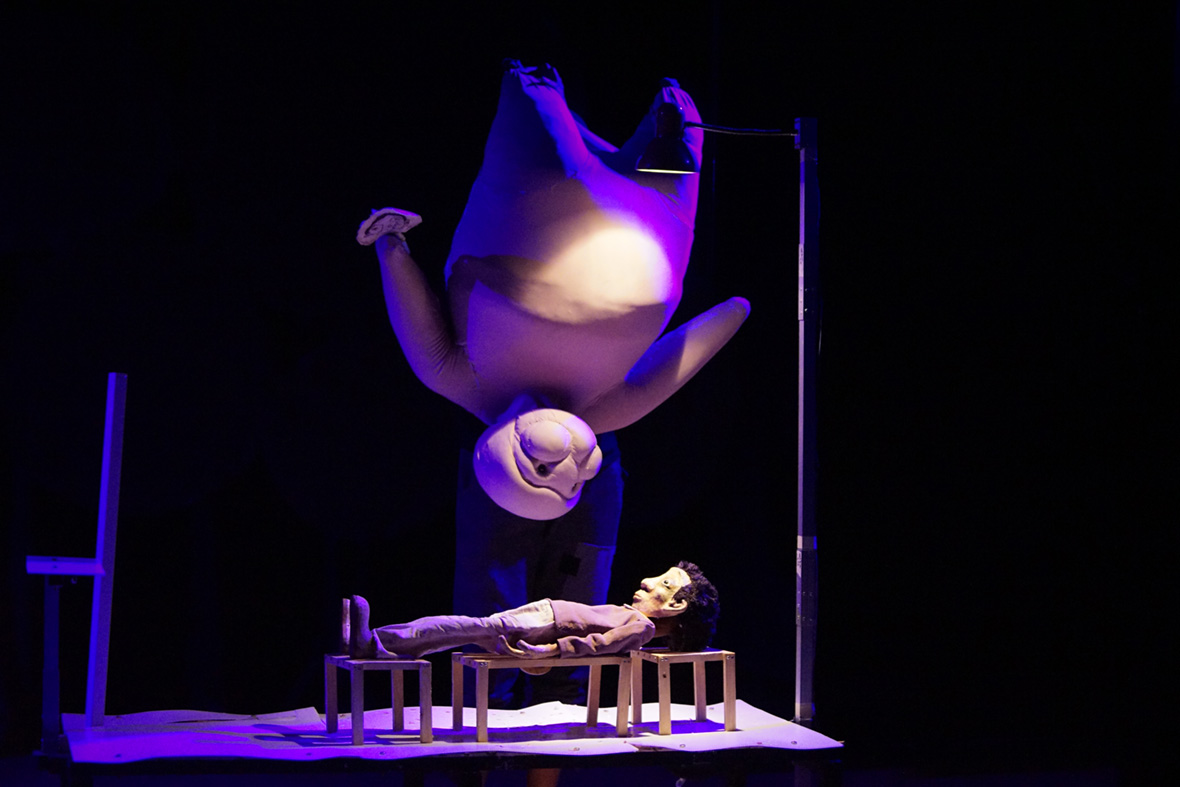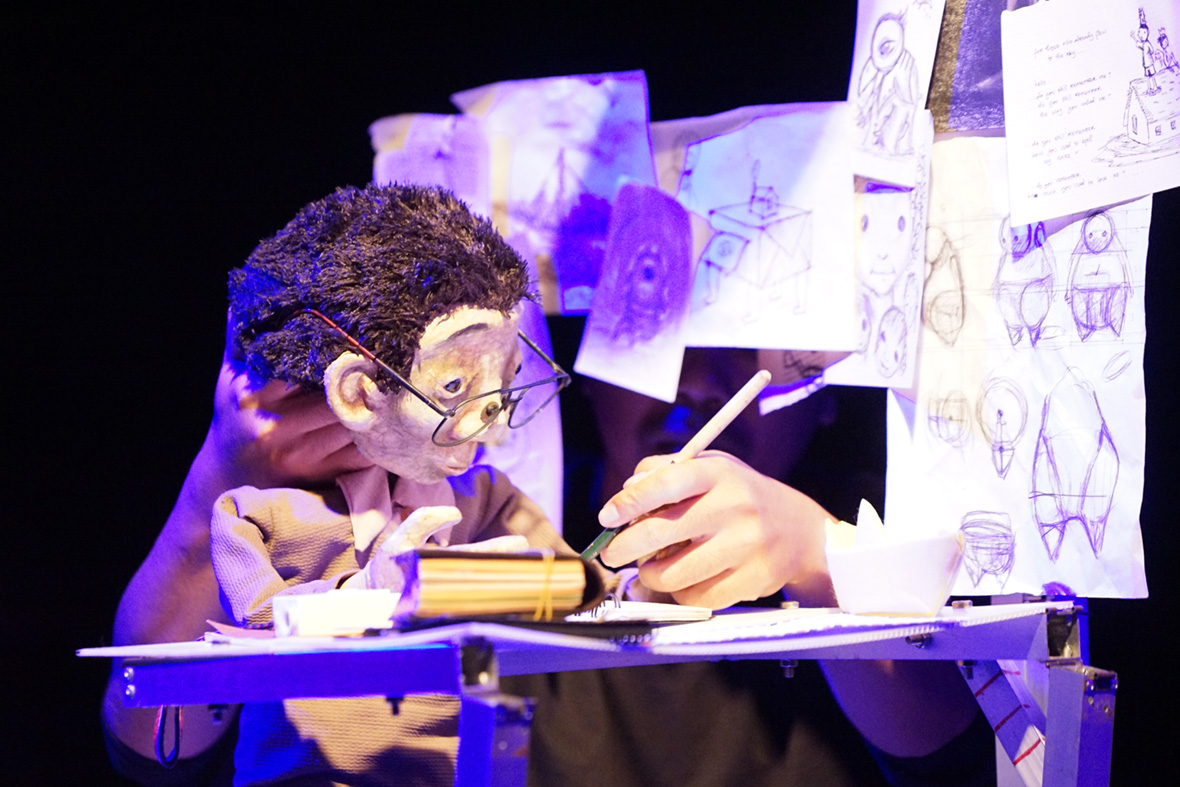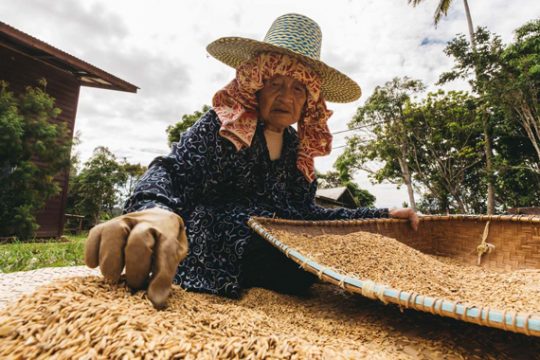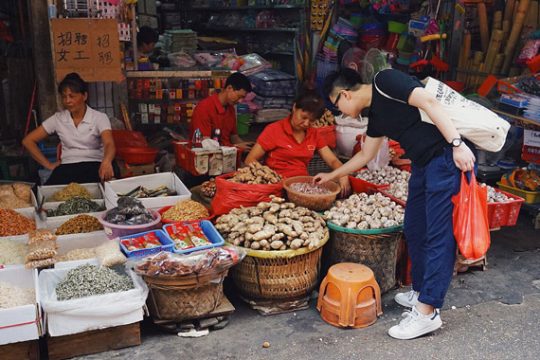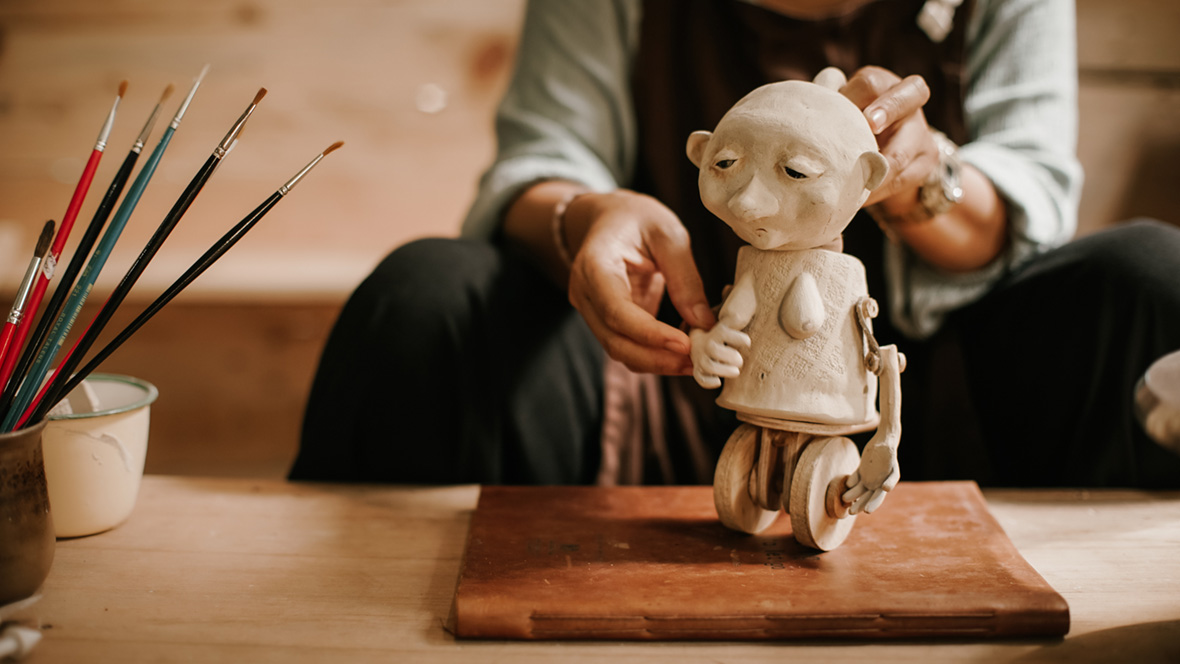
With moonlike faces and beady eyes, papery skin, and dangling limbs, the characters in Indonesia’s Papermoon Puppet Theatre float, stomp, and clack, communicating with the audience without words. Movement, sound effects, and lighting speak for them instead.
Papermoon is a troupe based in Yogyakarta with six core members from across Indonesia. Founded by Maria Tri Sulistyani, it was originally established as an art studio for kids but evolved into a puppet theater company in 2010. Although each member is involved in various creative duties, there are two main puppet designers, three main puppeteers, and Sulistyani is the primary scriptwriter. None of them have received formal training in puppetry and learned everything hands-on. The initial storyboards, puppet sketches, and set designs are drawn by visual artist Iwan Effendi and graphic designer Anton Fajri, the latter of whom also builds the sets. At shows, Effendi and Anton also perform as puppeteers.
空洞深邃的圆眼睛、纸糊状的材质、粗粝的面庞,悬在空中微微摆动的躯体,这些都是印度尼西亚纸月亮(Papermoon)木偶剧院里的角色,神似一个个行走的月亮。或飘然移动,或重步前行,木质结构产生碰撞声噼啪作响,它们正与与观众进行无声的对白。动作、声音和光效替它们诉说衷肠。
驻扎在日惹市的木偶剧团 Papermoon 由印尼各地的六名成员组成。这家由艺术家 Maria Tri Sulistyani 创立的剧团最初是一间儿童艺术工作室,后来逐步转型,于 2010 年成为一家木偶剧公司。公司内木偶设计师两人、操纵师三人,主创 Maria 则担任总编剧。六人从未接受过正规培训,均从实践中习得技艺。从最初的剧情梗概图、木偶设计草稿和场景设计,这些都由视觉艺术家 Iwan Effendi 和平面设计师 Anton Fajri 绘就,后者还负责亲自布景。与此同时,二人还是木偶操纵师。
The team mainly uses paper, wood, and rattan to construct their puppets and sets. But recently, they began exploring ceramics and other sustainable materials sourced locally. “We’re trying our best to use recyclable, organic materials that are not imported,” Sulistyani says. “Each time a puppet meets its end, we break it down and reuse the parts.”
Each performance lasts from 45 minutes to an hour. They’ve taken shows to multiple countries, and they create at least two new plays each year. Since it’s easier to find foreign grants and the performing arts infrastructure is limited in Indonesia, the majority of Papermoon’s traveling performances have taken place abroad. When performing at home, they largely stay within Yogyakarta. “But our biggest dream is to bring our performances to different islands in Indonesia,” says Sulistyani.
纸、木头和藤条是木偶制作和布景的主要原材料。近日,团队还开始尝试陶瓷和可持续材料。Maria表示:“每当一个木偶完成了使命,它就会被拆除,身体各部分的材料会被循环利用,因此可回收材料对我们来说非常必要。我们仍使用一些聚氯乙烯管,不过总会多次使用。”
每场演出的时长为四十五分钟至一个小时。如今,Papermoon 木偶剧团已在多个国家开展演出,甚至已将多部作品带至海外。此外,剧团每年还会开发至少两部新剧。由于印尼当地的演出基本设施还尚待完善,而海外演出项目往往更易接受当地的经济扶持,Papermoon 的大多数巡演都在海外进行。而在印尼国内演出时,行程范围基本不出日惹。Maria 表示,“若不考虑现实因素,我们还是希望能在印尼本土进行表演。”
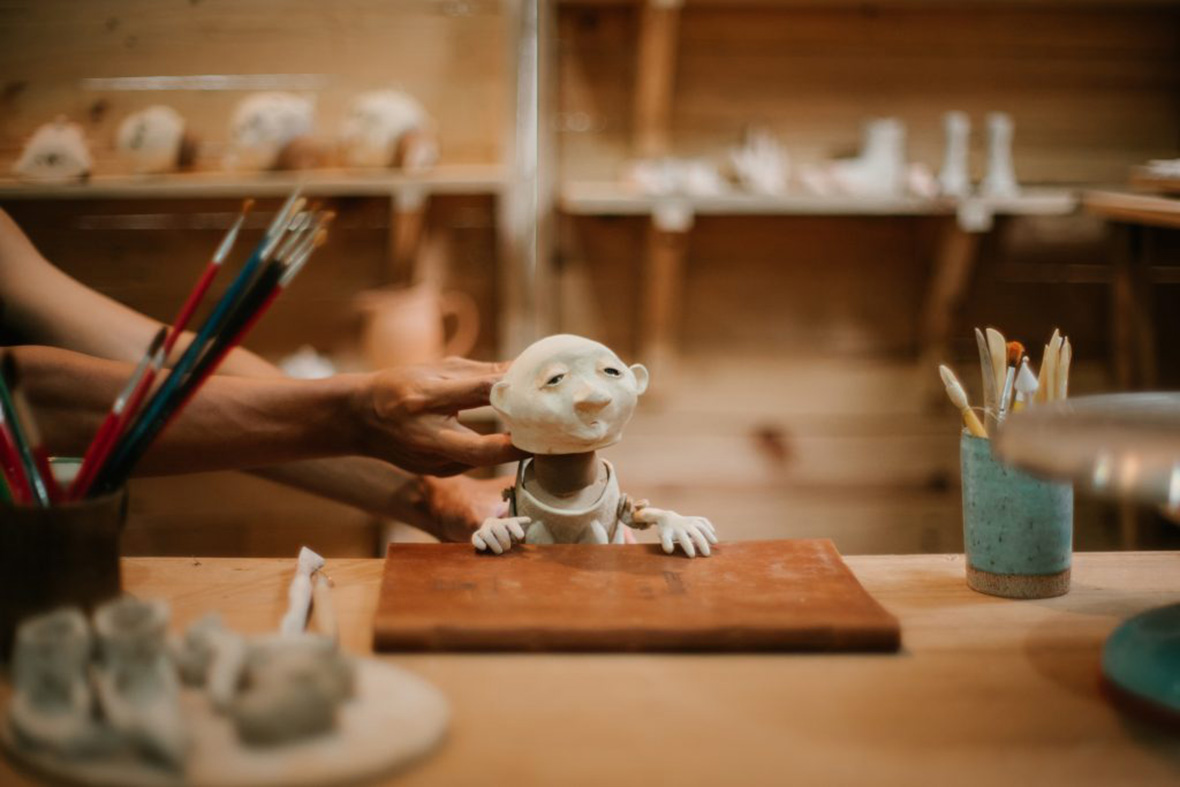
Papermoon’s puppets range in size from as small as 20cm tall to as large as 3.5m tall. “We use giant puppets to ‘shout,’ human-size puppets to ‘talk,’ and small puppets to ‘whisper,’” Sulistyani explains. “Shadow puppets are the soul and memories.” Sometimes, the “puppets” are actors wearing masks, who perform alongside the actual puppets.
Many Papermoon plays are site-specific and performed in public places, with one having even taken place in a traditional market. But they build a new set for each play that requires one. “We prefer intimate spaces rather than a big opera house,” Sulistyani explains. “We love for audiences to experience something that is unusual in theater.”
Papermoon 所制作的木偶大小各异,小到 20 厘米高,大至 3.5 米。对此,Maria 解释道,“这些木偶各司其职,大型木偶嗓门最大,小型木偶低声细语……皮影木偶则在表演中代表灵魂和记忆。有时,人物还会带上面具,亲自参与表演。
Papermoon 许多场人偶的制作都是因地制宜,演出场地也多选择在古玩店和传统市集等公共场所。“与大型歌剧院相比,我们更倾向于接地气的场地”,Maria 如是说。此外,台上的木偶们还经常与观众进行互动,有一次,它们甚至飞过观众的头顶。

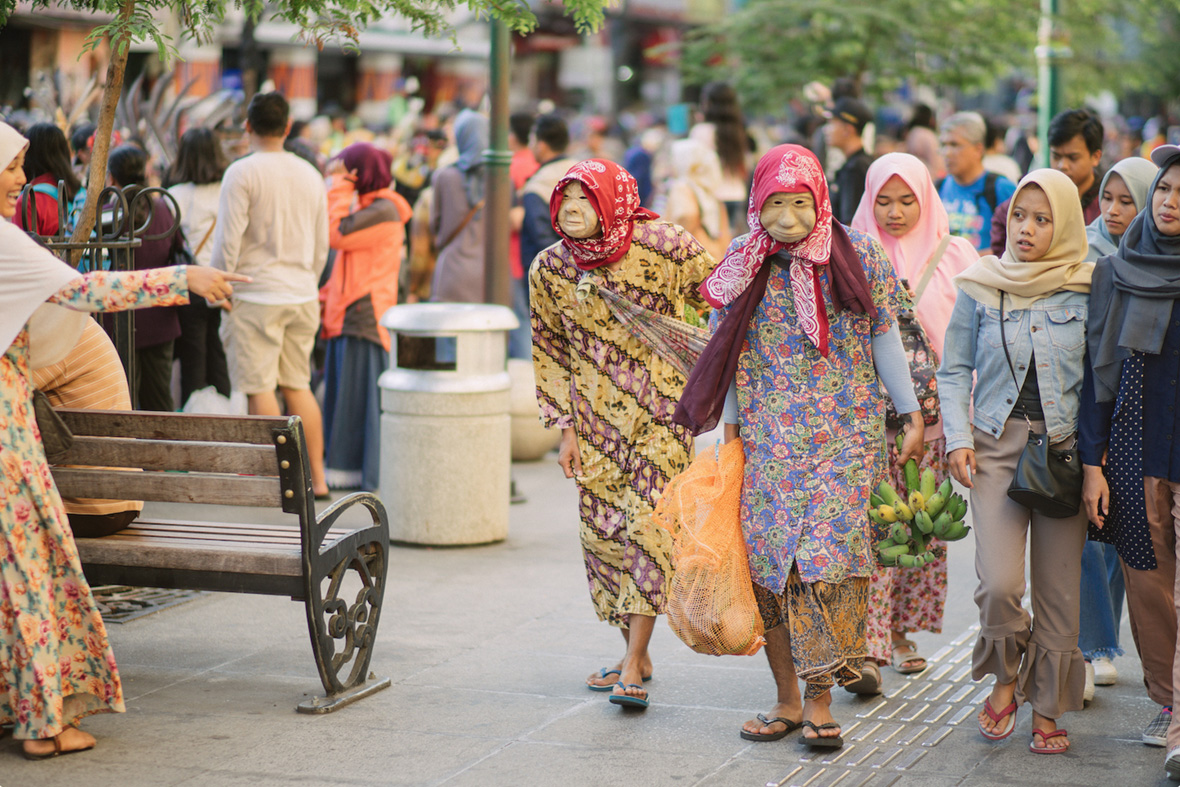
Since Papermoon’s plays don’t use verbal speech, sound design is a crucial element of their work. This was especially true in 1200°, which told the story of a ceramic puppet looking to piece itself together. With the way sound was used and the binaural headphones that viewers were invited to listen with, it could be considered an ASMR performance.
Papermoon regularly works with a composer named Yennu Ariendra (who works under the moniker Y-DRA), a well-respected electronic musician known for incorporating local styles and instrumentation into his music. “Usually they present a very rough draft of the script at the beginning of the process and we brainstorm the universe, characters, and plot,” he says, explaining how he ideates the score. “Then I work alone when writing the music.”
With an approach similar to that of a Foley artist, he uses the same materials that Papermoon uses to create the puppets to produce certain sounds in the music. (You can listen to one composition here.)
由于 Papermoon 的演出不涉及实质上的言语对白,因此音效设计显得至关重要。一场名为《1200°》的演出讲述了陶瓷木偶试图将自己拼接完整的故事,另辟蹊径的声效呈现方式让观众佩戴双声道耳机体验了一把听觉盛宴。
与此同时,Papermoon 剧组还和作曲家 Yennu Ariendra 保持合作关系。Yennu 在当地是一名饶有名气的电子音乐家,擅长将本地传统音乐与当代乐器相融合。对于剧作配乐的创作,Yennu 说道:“创作初期,编剧会向我呈现剧本初稿。随后我们会进行头脑风暴,构思整体框架、人物和情节……接下来我会独立进行创作并完成谱曲。”Yennu 以木偶制作材料相互碰撞的声音作为音乐采样,其效果往往让人身临其境。
无法观看?前往优酷
Traditional puppet theater is still very popular in the provinces of Java and Bali, with epics such as Mahabharata and Ramayana being some of the most popular plays. The country has 17,000 islands and over 700 ethnic groups and languages and Java and Bali are only two of them. Unfortunately, puppet theater is a lot less common in the other 91 cities of Indonesia. “Between 1965 and 1999, the only traditional arts that survived were used for rituals or as propaganda for the government and they were very ‘Javacentric,'” Sulistyani explains. “Traditional puppetry spread to national TV and radio stations but otherwise dwindled.”
Wayang is the most well-known form of Indonesian puppetry but has strict rules and rituals. Papermoon doesn’t work only within the bounds of local traditions though, instead also pulling more inspiration from traditional Japanese puppetry like bunraku and kuruma ningyo, which don’t use a rod or string to animate the puppets. “We love the direct relation between puppeteers and puppets,” Sulistyani says. “We prefer that because it transfers the energy completely from the puppeteer to the puppet. We also use lots of shadow elements in our productions though.”
传统木偶表演在爪哇和巴厘地带依然十分流行。其中,《摩诃婆罗多》和《罗摩衍那》的木偶表演最受大众欢迎。印度尼西亚拥有一万七千座岛屿,其上星罗棋布地分布着七百多个族群和语言,而爪哇和巴厘只占其中之二。更令人遗憾的是,木偶表演在印尼其他九十一座城市却相对罕见,普及率较低。对此,Maria 解释道:“从1965年到1999年间,仅存下来的传统艺术都被用于宗教仪式或政府宣传,爪哇特征鲜明。虽然你会在电视和广播节目中发现木偶的元素,但在其他媒介里,木偶表演的存在感很低。”
哇扬戏(Wayang)是印尼木偶戏最为人熟知的形式,然而其模式、规则和仪式都有很多讲究。而 Papermoon 木偶戏的灵感其实更多来自于文楽(bunraku)八王子黑马宁代(kuruma ningyo)等日本传统木偶,无需用提棍和吊绳对木偶进行牵引,由真人在背后双手直接控制。“木偶戏中,演员和木偶之间需要具备紧密的联系”,Maria认为,“这是因为这一过程能将演员的能量全部传输给木偶,木偶的动作更加真实。”
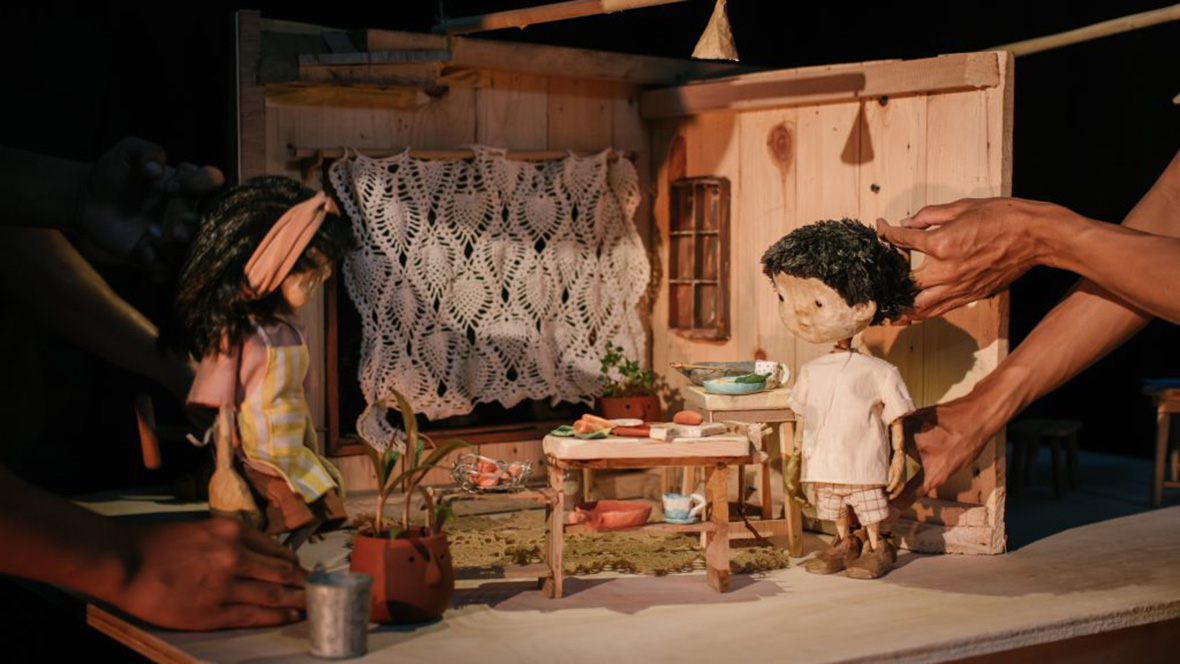
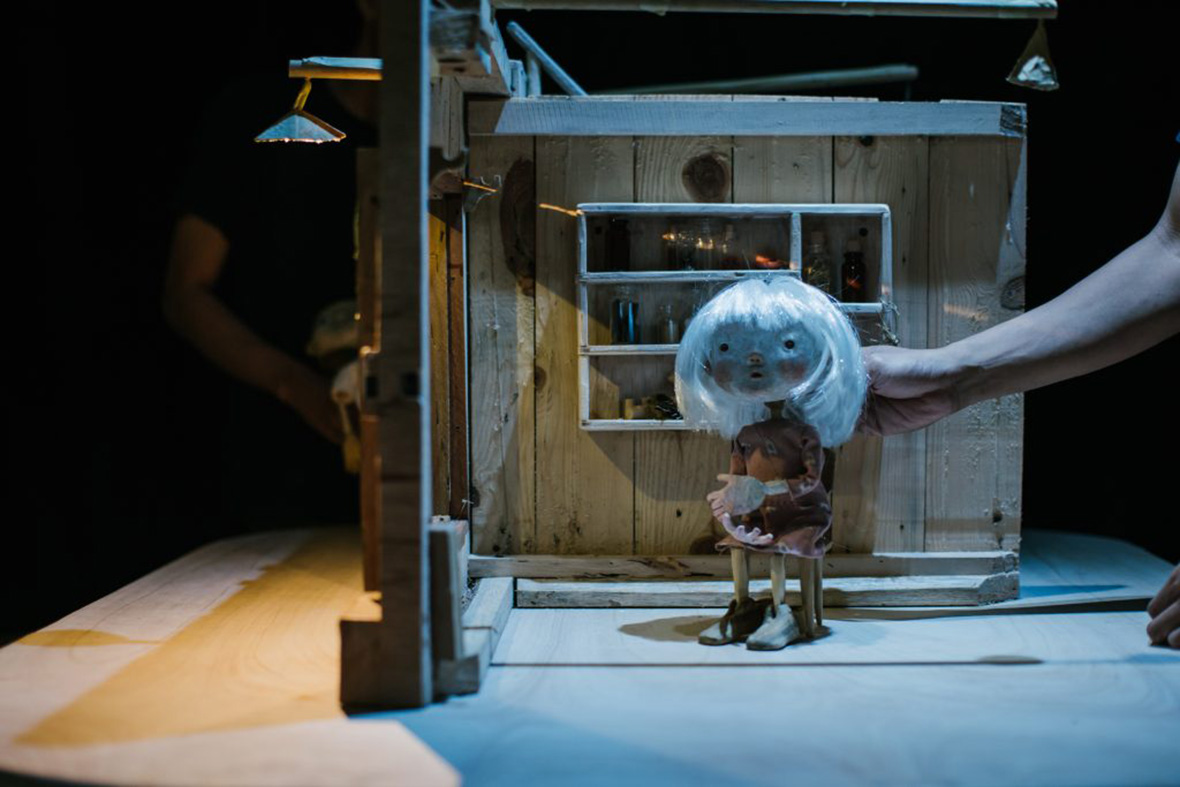
Papermoon’s plays are all original scripts that revolve around everyday people’s stories, which they believe reflect societal and political realities. The group is also drawn to stories about children’s imagination and human connection to nature. Heavier topics, such as the country’s past tragedies, are also approached with an unflinching gaze. “History is written by the winner as their propaganda, but there’s always another side to it,” Sulistyani says. “But telling our stories is not about who was right or wrong. Rather, it’s about understanding more where we are standing right now, what kind of air we breathe, what values we hold.”
木偶戏情节全部取材于普罗大众的民间生活,反映出种种社会和政治现实。此外,剧团还格外关注儿童天马行空的想象力以及人与自然之间的联系。有时,剧目内容也会涉及过往悲剧等更为沉重的话题,在反映此类话题时往往针砭时弊,毫不畏惧。“历史由赢家书写的,目的是宣扬他们的功绩,这是一把双刃剑”,Maria 评论道,“然而我们的故事并非要评判孰是孰非。相反,它帮助人们更好地了解现在的处境,了解我们所处的位置以及价值观念。”
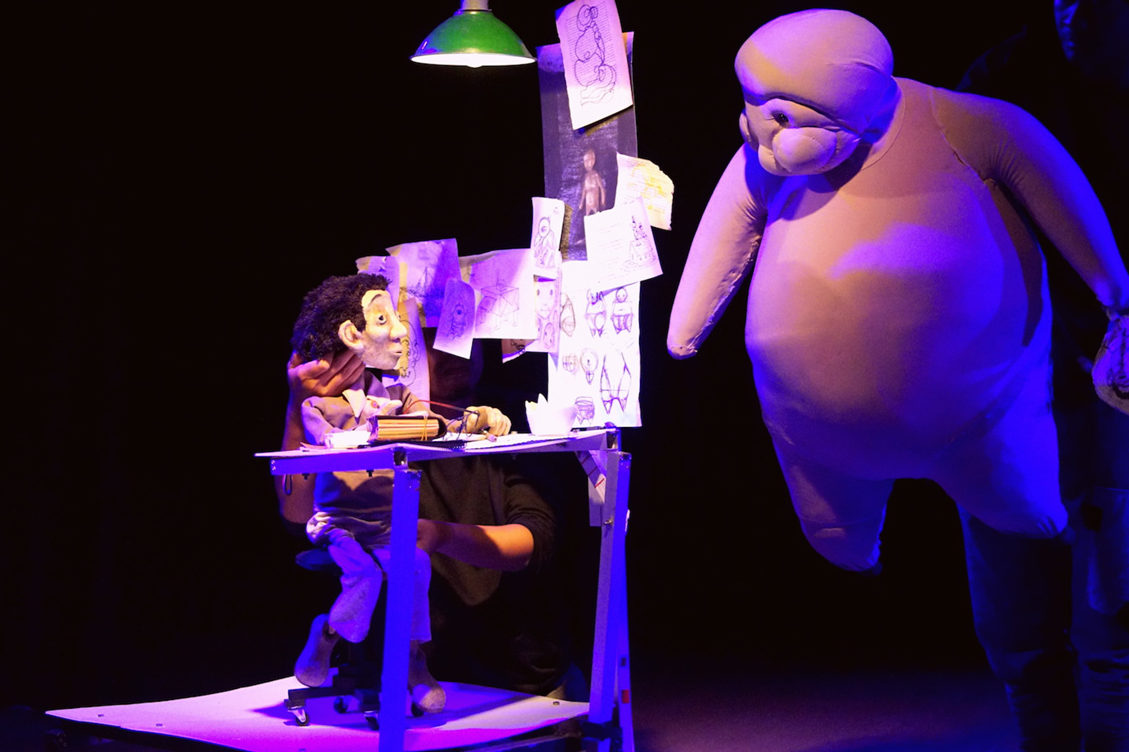
The company is drawn to what Sulistyani calls the “gray histories of the nation,” or tumultuous issues that have not met a fair closure. A prime example Sulistyani refers to is the government’s massacre of a million communists and leftists in 1965. “This left a big, unresolved wound in our society to this day,” she says. “Many have never heard any other perspective than what our leaders told them. Many others never heard of it at all, even if it’s actually their family history.”
剧团成员对“国家的灰色地带”兴趣颇深,常常阅读国内发生的各种不公平事件。Maria 提到当地政府曾于 1965 年对一百万共产主义者和左派人士进行大屠杀。“时至今日,这一事件依然是社会仍未愈合的一个巨大伤口”,她表示,“许多人只听到过领导方面的一面之词,还有许多人根本没听说过这一事件,就算与其家族关联也是如此。”
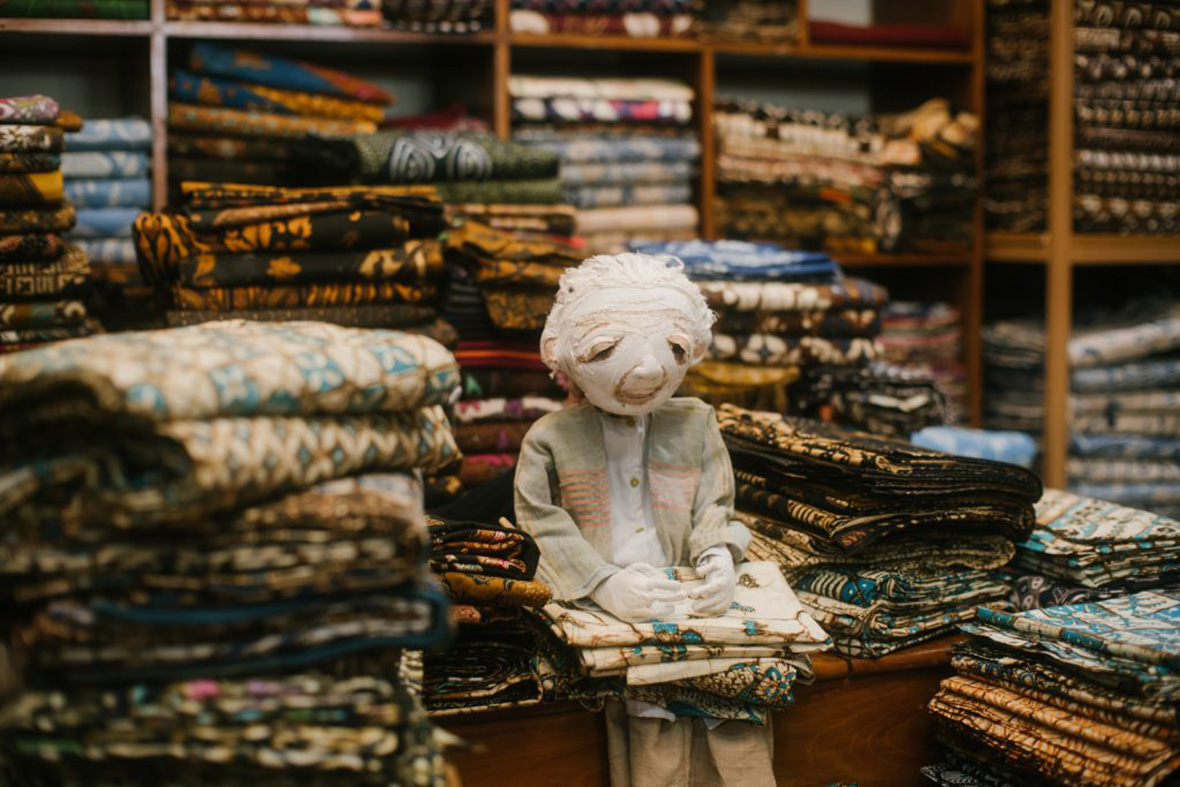
“We are citizens of the world,” Sulistyani says. “Other countries might have the same problems as we do. Maybe what we feel might never have existed elsewhere in the world. Sometimes what happened here is because of what happened in other countries.”
The stories that Papermoon hones in on may be specific to Indonesia, but they’re relevant to a collective understanding of humanity—regardless of age, place, or time.
“我们是世界公民”,Maria 如是说,“可能其他国家也有类似的问题。但人民的苦果终究由身在那里的人尝试。有时,表面事件可能是国家之间的连锁反应,后果实则需要大家一起来承担。”
Papermoon 木偶剧讲述的故事也许全部发生在印度尼西亚,但它们与人类对于人性的集体理解密切相关,无论年龄和时间地点,人们总是能感同身受,产生共情。
Like our stories? Follow us on Facebook and Instagram.
Website: www.papermoonpuppet.com
Instagram: @papermoonpuppet
Contributor: Mike Steyels
Chinese Translation: Alice Zhang


